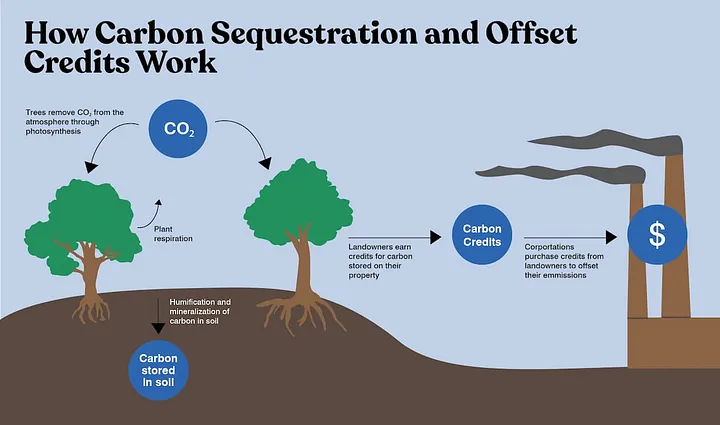Author: Kiersten Sundell

Taylor Swift has been getting slammed in the media for emitting over 8 thousand tons of carbon in the year 2022, which is more than any other celebrity in the world and 1,100 times more than the average person. It’s well known, however, that she buys double the carbon credits for what she emits, theoretically improving climate change instead of making it worse. What are carbon credits, and why is it important that they are “reliable?”
A carbon credit is a tradeable permit that represents the right to emit one ton of carbon dioxide or its equivalent. Carbon credits are typically developed by companies that work to remove carbon from the air, like a project that reforests logged areas with new trees, or industrial carbon capture that physically sucks carbon from the air and then stores it underground.
Once these companies generate a certain number of carbon credits by removing carbon from the atmosphere (or at least promising to), the credits can be sold to companies or individuals who want to pollute with carbon. And once these buyers purchase the carbon credit, they are able to report much lower rates of pollution than they actually produce.
Now while carbon credits are a great idea in theory, there are many of problems with them in reality. And not champagne problems — climate-dependant ones.
The first issue is something called geographic additionality — basically the idea that the pollution is happening very far away from the emission reduction activity. A company might be planting trees in the Amazon rainforest, and these credits could be sold to a factory in New York. While carbon is theoretically being sucked out of the atmosphere at large, reducing carbon in Brazil isn’t going to help the air quality in New York.
Another problem is that almost anyone can sell them, even if they’re not going out of their way to reduce carbon emissions — landowners, for example. People that own large expanses of land, like a farmer, or someone with a big forest in their backyard, can argue that this undeveloped land is sequestering carbon, so the owner is actively removing carbon from the air. I’m sure you can imagine how this mentality could go wrong very quickly. If everyone suddenly counted their land as a carbon removal effort and sold others the right to pollute, we’d have an astronomical spike in global emissions, with zero additional action working to reduce it.

A final problem is that carbon credits are not well regulated at all. It’s difficult to measure what it really takes to remove one ton of carbon from the atmosphere, and some people just guess. If we’re working with the landowner example, there are super-generalized calculators to figure out how much carbon your land sequesters just based on the area and tree cover. These calculations don’t take into account soil type, tree species, or agricultural nutrient depletion, so really there could be much less carbon actually sequestered than what’s being reported. If another company plants 100 trees, sells 10 credits for the carbon those trees will absorb, but then cuts them down a year later for firewood, the carbon re-enters the atmosphere, and nobody is keeping watch to hand out consequences.All of this is just the tip of the iceberg, and it’s something we really should be concerned about. Major companies that we buy from, entire governments, and the wealthy elite all rely on carbon credits to meet environmental pollution standards, and when these credits aren’t reliable, more pollution is generated in the end.
To watch the full video, visit our TikTok page!
